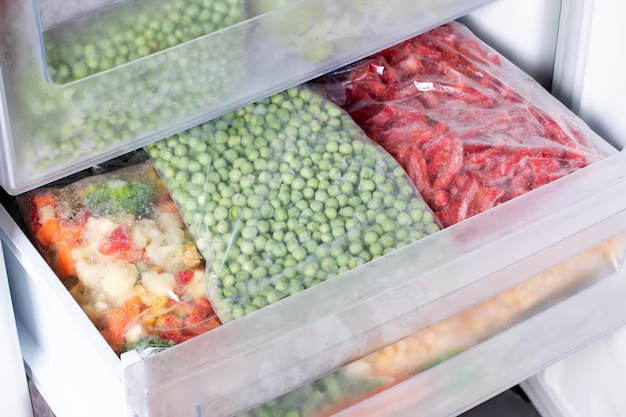How Long Can You Keep Discard in the Refrigerator? Your Guide to Safe Food Storage
Ever stared at the back of your fridge and wondered how long you can keep that concoction you labeled as “discard”? You’re not alone. Understanding food safety, especially when it comes to storing discards, is crucial in preventing food waste and, more importantly, foodborne illnesses. Let’s delve into the ins and outs of refrigerator storage, focusing on how long different types of discards can last while remaining safe and nutritious.
🥶 Understanding What We Mean by "Discard"
Before we dive into the specifics, it's essential to clarify what we mean by "discard." In culinary terms, a "discard" often refers to leftovers from sourdough starters, unused food scraps intended for broths, or any partially used ingredients from recipes. While these can seem irrelevant, they often hold potential for creative culinary uses, provided you store them correctly.
How Long Different Discards Last in the Fridge
🍞 Sourdough Starter Discard
Shelf Life:1-2 weeks
Sourdough starter discard can last about a week or two in the fridge. Tip: Label and date your storage containers to keep track of freshness.
Best Uses:
- Pancakes or waffles
- Crackers
- Quick breads
🥬 Vegetable Scraps
Shelf Life:5-7 days
These scraps, intended for making broths, soups, or smoothies, remain fresh for up to a week. For longevity, place them in an airtight container.
Best Uses:
- Homemade vegetable stock
- Additions to compost
- Smoothie boosters
🍗 Meat Scraps
Shelf Life:3-4 days
Meat scraps must be used promptly to reduce the risk of bacteria growth. Opt for freezing if you’re unsure when you’ll use them.
Best Uses:
- Stock or broth
- Pet food additive
- Flavor for soups or stews
🧀 Cheese Rinds
Shelf Life:3-4 weeks
Rich in flavor, cheese rinds can last much longer and enhance many dishes as they mature.
Best Uses:
- Infuse in risotto
- Flavor soups
- Cheese sauce base
Storing Discards: Best Practices
🌡️ Temperature Control
Your refrigerator should be set to 40°F (4°C) or below to maintain optimal food safety.
🥡 Proper Storage Containers
Invest in airtight containers or resealable bags that maintain the food’s integrity and prevent contaminants from entering.
🔖 Labeling and Dating
Always label and date your containers to avoid the common "fridge mystery" dilemma.
🌬️ Airflow is Key
Do not overstuff your fridge, as this can block air circulation, leading to uneven cooling and potential spoilage.
Signs That Discard Has Gone Bad
In general, trust your senses. If it looks, smells, or feels off, it’s safer to discard it.
👃 Smell Test
Fermentation odors are normal for some discards like sourdough. However, sour or ammonia-like smells in other foods suggest spoilage.
👀 Visual Cues
Mold growth is a clear indicator that the food has gone bad. Discard any food with visible mold.
🤲 Texture Changes
If your discard has changed texture drastically, such as becoming slimy, it's time for the trash.
🤖 Utilizing Discards to Reduce Waste
Creative Recipe Ideas
Here are a few recipes to inspire you to use those discards innovatively:
- Sourdough Pancakes: Simple, quick, and uses up leftover sourdough.
- Veggie Stock: Transparent, low-cost, and perfect for soups.
- Cheesy Broth: Use those rinds to enrich your next stew base.
The Environmental Impact of Waste Reduction
Reducing food waste isn’t just good for your pocket, but it also has a substantial positive environmental impact. Every piece of food saved and utilized effectively is a step forward in combating global food waste challenges.
📋 Practical Tips for Managing Fridge Discards
| ❗ Key Tips | 📝 Details |
|---|---|
| Use Airtight Containers | Prevents contamination and preserves flavor. |
| Label & Date Everything | Helps track shelf life and avoids unnecessary waste. |
| Set Fridge Temperature Correctly | Ensure your fridge stays below 40°F (4°C). |
| Plan Weekly Inventory Checks | Regular checks prevent food from being forgotten. |
| Get Creative with Recipes | Experiment with discards in new dishes. |
💡 Conclusion: The Art of Storing and Using Discards
Understanding how to effectively store and utilize your kitchen discards can significantly reduce waste and save money while also allowing you to explore fresh culinary ideas. By following the tips outlined here, you can extend the life of your food and contribute positively to the environment. Remember to always trust your senses and when in doubt, it’s safer to throw it out.
A well-organized fridge is not only a testament to good food management but also a catalyst for culinary creativity. Embrace the process, and you'll soon find yourself a master of resourceful cooking. Happy storing!
